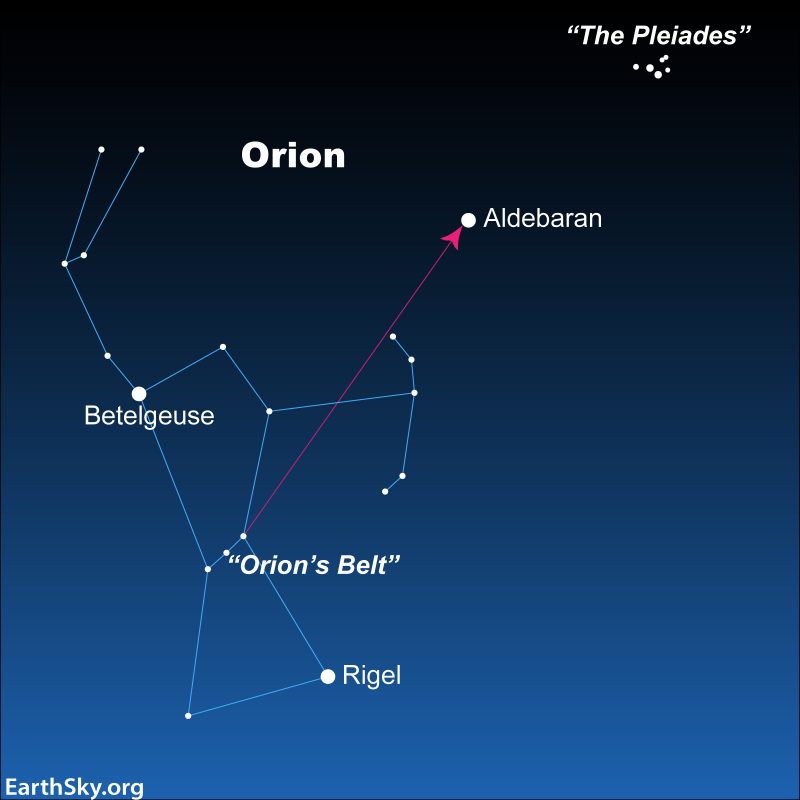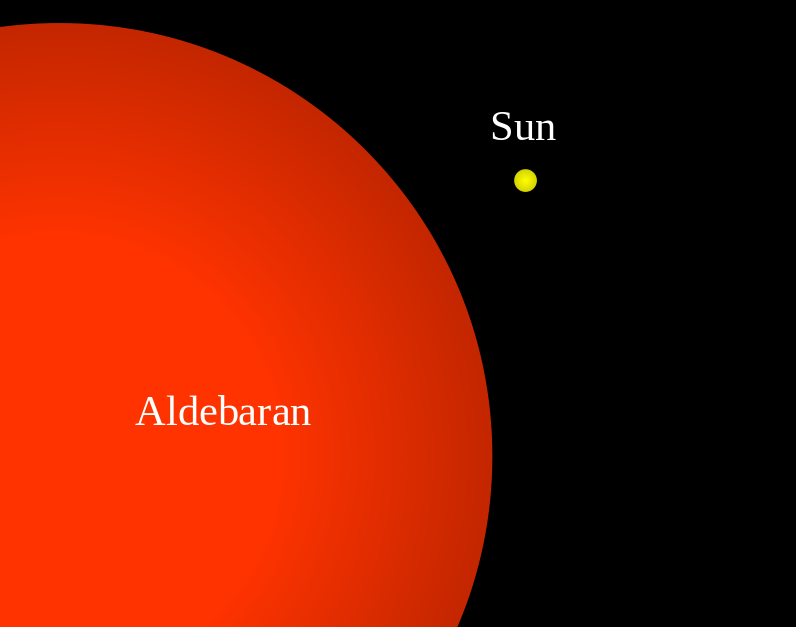
Moon and bright stars
Look for the moon near a group of identifiable objects on the evenings of January 12 to 14, 2022. You’ll see the tiny, misty, dipper-shaped Pleiades star cluster, aka the Seven Sisters. You’ll see the red star Aldebaran, fiery eye of the Bull in the constellation Taurus.
And, when the moon moves away, you can still confirm it’s Aldebaran you’re seeing, using the famous constellation Orion as a guide. Notice the three stars of Orion’s Belt. Then draw an imaginary line through the belt toward the Pleiades. The first bright star you come to will be Aldebaran with its distinctive red-orange glow.
EarthSky 2022 lunar calendars now available! Order now. Going fast!

Come to know the legendary Pleiades
The Pleiades star cluster is visible from virtually every part of the globe. It’s seen from as far north as the North Pole and farther south than the southernmost tip of South America. It’s very noticeable with its tiny size and dipper-like shape. Some people mistake it for the actual Little Dipper, which is in the northern sky.
The Pleiades cluster is a true open star cluster in space. It’s a family of stars that were born together and still move together in orbit around the center of our Milky Way galaxy.
Aldebaran is Taurus’ brightest star
The name Aldebaran is from the Arabic for the follower, presumably as a hunter following prey. To the early stargazers, this “prey” was probably the Pleiades star cluster. Aldebaran follows the Pleiades across the sky.
Aldebaran is part of a V-shaped group of stars – the Hyades – that forms the Bull’s face. According to Richard Hinckley Allen in his classic book Star Names: Their Lore and Meaning, people once applied the name Aldebaran to the entire Hyades star cluster. But Aldebaran isn’t a true member of the Hyades cluster. It’s only located near the cluster along our line of sight.
Aldebaran is a huge, aging star. The diameter is between 35 and 40 times the size of our sun. If Aldebaran replaced our sun, its surface would extend almost to the orbit of Mercury.


Orion is easy to spot
The constellation Orion the Hunter is a constant companion to stargazers around the globe at this time of the year. It’s probably the easiest constellation to spot thanks to its distinctive Belt: 3 stars in a short, straight row at the Hunter’s waistline. If you pick out any 3 medium-bright and equally-bright stars in a row in the evening sky now, you’re probably looking at Orion. Want to be sure? There are two even brighter stars – one reddish and the other blue – on either side of the Belt stars.
As seen from mid-northern latitudes, you’ll find Orion in the southeast at early evening and shining high in the south by mid-to-late evening (around 9 to 10 p.m. local time, the time on your clock wherever you are). If you live at temperate latitudes south of the equator, you’ll see Orion high in your northern sky around this hour.
Bottom line: Watch for the noticeable Pleiades star cluster, and the bright red star Aldebaran, near the moon on the nights of January 12 and 13, 2022. Then, on January 14, be sure to notice the moon near the constellation Orion the Hunter. The short, straight row of 3 stars that represents the Belt of Orion points to Aldebaran.
The post Moon and bright stars on January 12, 13 and 14 first appeared on EarthSky.
0 Commentaires